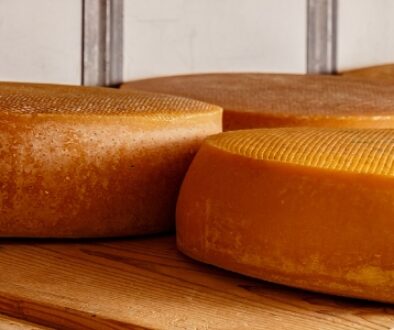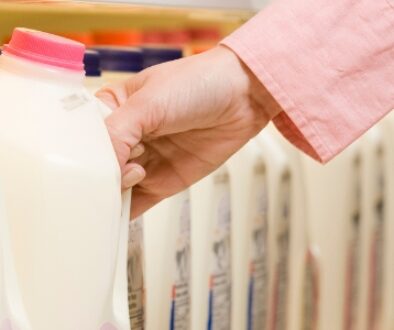Marketing a New World of Dairy
It is an interesting and challenging time for the dairy industry. While we are seeing an increase in the consumption of products like specialty cheese, we are also seeing a decrease in fluid milk consumption.
Consumers’ tastes and expectations are changing. New plant-based formulated food products are coming on the market, many of which are marketed as alternatives to dairy products.
The move toward plant-based products is being partly driven by guidance from some groups/organizations that appear to be against the consumption of animal products. Unfortunately, these recommendations are based on biases rather than solid nutritional science. To further complicate matters, many of the organizations touting plant-based food products are making inaccurate claims that their products are more sustainable or environmentally friendly. The reality is that compared to the 1940’s, the modern U.S. dairy farmer uses only about 20% of the animals, 35% of the water, and only 10% of the land in order to produce a similar amount of milk. The dairy industry is becoming more efficient each year as farmers need fewer cows to produce more milk. Despite these facts, many consumers are being swept up in the rhetoric promoted by manufacturers of plant-based foods.
What can the dairy industry do?
Fortunately, there is a lot working in favor of our industry. Number one, we have a great product. The nutritional profile that dairy offers is unmatched in other foods; milk is designed as a nutritious food for the young, unlike other imitations or substitutes. In addition to the many excellent dairy products that people have consumed for thousands of years, the dairy industry continues to develop new products and ingredients.
So, to answer the previous question, ‘What can the dairy industry do?’ I think the short answer is to educate and innovate. We need to do more to raise consumer awareness of how dairy is changing and how it can benefit consumers’ lives. When it comes to educating consumers, there is much work to do. For instance, some consumers avoid all dairy products because they have concerns about lactose. Many of these consumers are simply unaware that dairy products like aged cheese or yogurt are very suitable for people who have difficulty digesting lactose. Some European dairy organizations have successfully gotten this message out to their public. Could we similarly educate consumers in the U.S.?
Our education efforts should promote the fact that dairy products and ingredients are health foods. Study after study has shown that dairy proteins are among the best and highest-quality proteins available. A recent study conducted here at the Center for Dairy Research (CDR) also highlighted that dairy proteins have excellent flavor and functional properties compared to most plant proteins. All ages need high-quality sources of protein in their diet. Perhaps we could market and customize dairy products rich in proteins to different age groups. We know how important proteins are for the proper growth and development of children, but studies also show that dairy proteins can help seniors fend off muscle loss (sarcopenia) too.
Similarly, other dairy components have also been shown to have other positive health benefits. There is evidence that dairy ingredients like phospholipids can have a positive impact on brain development and health. Perhaps we could develop dairy products that prominently feature phospholipids and market those products as a sort of brain health food? Phospholipids are currently being used in high-end infant formulas but, given the focus on brain health and cognitive development, they could be expanded into other products for consumers of all ages. As I write this, there are ongoing research projects at CDR looking at isolating phospholipids from dairy coproducts.
As we think about ways in which we can promote and educate consumers about dairy, we should keep in mind that there will always be many competitors to dairy. The good news is that there are no other products that can replicate the complete package of nutrients provided by dairy. Yes, they can produce foods with a few added nutrients, but they cannot replicate the very complicated biological structures found in milk that helps its bioactivity.
Some consumers’ view of dairy as an old, traditional product can be an advantage and disadvantage. It is an advantage because people have relied on dairy products for thousands of years. Many people grow up eating dairy products, like butter and cheese, and enjoy it their entire lives. However, it can also be a disadvantage because some consumers are attracted to shiny new products and looking for the new best thing. And, because of this mindset, we must be thinking of ways to continually engage and excite consumers about dairy.
For instance, I look at the exciting new dairy products developed through processing technologies (e.g., membrane filtration has opened up many innovation opportunities for both ingredients like whey protein isolate and beverages that have elevated levels of protein and calcium), and I think perhaps we could create “designer” milks with very specific traits. With the genetics and breeding knowledge that our industry has, we could select cows or herds to allow us to produce milks with different nutrient profiles. This could benefit farmers by allowing them to switch from “commodity” milk and instead create value-added milks. These milks would need to be either processed on the farm (which would create new farm businesses) or segregated in order to sell these unique milks.
The health benefits, or nutrition, of dairy is another area of strength for the dairy industry. Since the 1960’s, the general belief (or hypothesis) held by most nutritionists was that animal fats, such as saturated fats, which are found in most dairy products, contribute to cardiovascular disease (CVD). Over the past decade, multiple reviews and studies have indicated that this hypothesis related to dietary saturated fats needs to be revised.
In fact, many clinical studies find that consuming full-fat dairy products like cheese or whole milk are associated with decreased risks for serious health conditions and diseases like CVD or cancer. Instead, there is growing attention on whether components like excess refined sugar, hydrogenated and artificial fats have a negative impact on health. These are components that you typically find in formulated foods, not in dairy foods.
There will always be lots of competitors to dairy in the marketplace and there will always be a new processed food product developed by the food industry, but if we continue to produce nutritious, innovative dairy products in a sustainable way, dairy will continue to be a key part of the diet for generations to come.
Source: CheeseMarketNews.com




